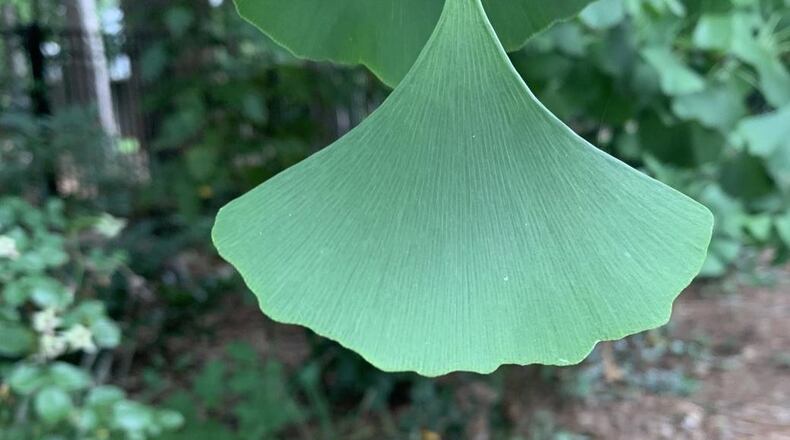Q: I was reading in National Geographic about ancient trees. I would like to get a ginkgo tree. Any advice? Bonny Wright, Kennesaw
A: Ginkgo is a great tree and there are a lot of varieties to choose from. 'Princeton Sentry' is columnar; 'Autumn Gold' makes a wide canopy for where you have a lot of space. Conversely, 'Chase Manhattan' is a dwarf, shrublike ginkgo that will only reach a height of about 6 feet. Since ginkgo is a relatively slow growing tree, be sure you plant it correctly to give it all the advantages. Tree planting details at bit.ly/GAtreeplant.
Q: I need to plant some trees to help with a water issue in my yard. We get water from my uphill neighbors. We figure trees will help soak up the water. Tabatha Burks, Fulton County
A: Some trees and shrubs tolerate wet soil, but they don't "soak up" the water nearby. If you're looking to have water-tolerant screen plants, Florida anise (Illicium floridanum), inkberry (Ilex glabra), sweet pepperbush (Clethra alnifolia), sweetshrub (Calycanthus floridus), Virginia sweetspire (Itea virginica) and winterberry (Ilex verticillata) are good choices.
Q: Do deer like Spartan junipers? Karla Schuster, email
A: Some evergreens are commonly fed on by deer, but juniper is not usually one of them.
Q: I have several Green Giant arborvitae that have grown beautifully. I would like to top them, in an effort to force more growth toward the middle. Mel Wilinsky, email
A: Pruning out the top of a tree doesn't force growth to occur in the middle of the tree. Pruning causes "nearby" dormant buds to sprout, but "nearby" means somewhere between 2 and 12 inches away from the cut, not 2 to 12 feet away. The only other thing that causes growth to occur in a certain vicinity is increased exposure to sunshine. Sunshine triggers photosynthesis in dormant buds and makes them sprout. The best way to control the shape and size of an arborvitae is to prune when the need is seen, not years later.
Q: The online retailer where I bought my butterfly bush recommends gardeners not to amend clay soil for a butterfly bush. Agree or disagree? Brenda Jefferson, DeKalb County
A: It is true that in most cases no amendments are needed when planting a tree or shrub. Amendments create a paradise for roots, which they are reluctant to leave when they need to explore the surrounding soil for new sources of water and nutrients. An exception could be made if you are planting a big shrub bed and can amend the entire area. And keep in mind that amendments are useful when you're planting annual or perennial flowers. I know this flies in the face of recommendations I have made over my career, but I am not too old to change my mind.
Listen to Walter Reeves’ segments at 6:35 a.m. on “Green and Growing with Ashley Frasca” Saturday mornings on 95.5 WSB. Visit his website, www.walterreeves.com, follow him on Twitter @walterreeves, on Pinterest, or join his Facebook Fan Page at bit.ly/georgiagardener for more garden tips.
About the Author
The Latest
Featured

